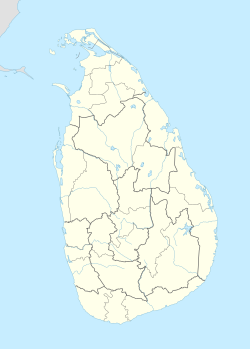Sevanagala සෙවණගල | |
|---|---|
| Coordinates: 6°23′12″N80°54′33″E / 6.38667°N 80.90917°E | |
| Country | Sri Lanka |
| District | Monaragala District, Sri Lanka |
| Area | |
| • Land | 123.98 km2 (47.87 sq mi) |
| Population | |
• Total | 42,894 |
| • Density | 333/km2 (860/sq mi) |
| Time zone | UTC+5:30 (Sri Lanka Standard Time Zone) |
| • Summer (DST) | UTC+6 |
Sevanagala is a rural area which is situated in western circumscription of Monaragala district. Sevanagala is a divisional secretariat and it consists of 14 Grama Niladhari Divisions (GND), which are further divided into 77 villages. Majority of Monaragala district population is represented from this region and the single majority of the ethnic group is Sinhalese while majority are Buddhists in religion. Embilipitiya is the closest city and it is situated 12 km away from here. The climatic condition of this area shows characteristics of a dry zone throughout the year though, November to December it has much cooler environment due to North East monsoon rains.

